South Australia’s first vice-regal proclamation was read at Holdfast Bay on 28 December 1836. This is one of the best known dates in South Australia’s history, but the significance of the document itself is often misunderstood.
What was the proclamation?
We should begin by establishing what it was not. The proclamation issued by Governor John Hindmarsh on 28 December 1836 did not proclaim the province of South Australia officially. That was done in England in two stages long before the first colonists set sail. First, in 1834 the British Parliament passed the South Australia Act which empowered King William IV to create South Australia as a British province and to provide for its colonization and government. Then on 19 February 1836, literally as the first of the South Australian Co.’s ships were about to sail, King William issued Letters Patent establishing the province and outlining various aspects of its management, including the way in which the original inhabitants’ rights should be maintained.
Governor Hindmarsh arrived at Holdfast Bay on 28 December 1836. Sometime later that day the ‘largest company … yet seen in the colony’ gathered ‘under a huge gumtree’, the English ensign of St George was raised, the various commissions of office were read and the governor’s private secretary, George Stevenson, read the governor’s first proclamation. Stevenson had drafted the text of this proclamation while still on board the Buffalo. The proclamation advised the assembled settlers that the government of the province had been created, asked them to respect the laws and to behave with ‘order and quietness … to prove themselves worthy to be the Founders of a great free colony’, and warned them that the governor intended to ensure that the rights of the Aboriginal people were protected as they were ‘equally entitled to the privileges of British subjects’.
The text of the proclamation is:
By His Excellency John Hindmarsh, Knight of the Royal Hanoverian Guelphic Order, Governor and Commander-in-Chief of His Majesty’s Province of South Australia.
In announcing to the Colonists of His Majesty’s Province of South Australia, the establishment of the Government, I hereby call upon them to conduct themselves on all occasions with order and quietness, duly to respect the laws, and by a course of industry and sobriety, by the practice of sound morality and a strict observance of the Ordinances of Religion, to prove themselves worthy to be the Founders of a great and free Colony.
It is also, at this time especially, my duty to apprize the Colonists of my resolution, to take every lawful means for extending the same protection to the Native Population as to the rest of His Majesty’s Subjects and of my firm determination to punish with exemplary severity, all acts of violence or injustice which may in any manner be practiced or attempted against the Natives who are to be considered as much under the Safeguard of the law as the Colonists themselves, and equally entitled to the privileges of British Subjects. I trust therefore, with confidence to the exercise of moderation and forbearance by all Classes, in their intercourse with the Native Inhabitants, and that they will omit no opportunity of assisting me to fulfil His Majesty’s most gracious and benevolent intentions toward them, by promoting their advancement in civilization, and ultimately, under the blessing of Divine Providence, their conversion to the Christian Faith.
By His Excellency’s Command,
Robert Gouger,
Colonial Secretary.
Glenelg, 28th December 1836.
God Save the King.
The proclamation was printed by Robert Thomas on the first press brought to South Australia, the Stanhope Press, that same press that later printed the Register – the first newspaper. Thomas arrived in South Australia on the Africaine, accompanied by his wife Mary, whose account of the first years of colonization makes lively reading. The Stanhope Press is part of the State History Collection managed by History SA.
The reading of the first proclamation was first commemorated in 1857 when the colony was judged to have ‘come of age’. Thereafter some commemoration has been held each year on 28 December.


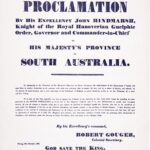

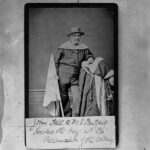
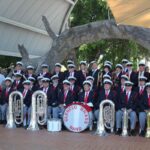
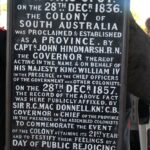
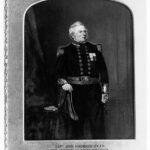
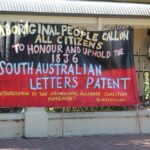
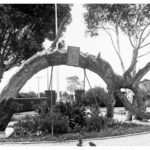
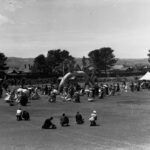

Comments
2 responses to “The Proclamation”
I would love to read more about Mary Thomas. I have found this article very interesting. As a migrant from the 1950’s I have always found Australian History interesting. As a child I remember hearing about “Fisher’s Ghost”, would love to know more about this as well.
Thanks Johanna,
She is certainly a fascinating woman. We’re working on an entry for this site, in the mean time you can read about Mary Thomas here: http://boundforsouthaustralia.net.au/journey-content/mary-thomas.html
Apologies for the slow reply, our spam filter has been a bit over-zealous and I missed a few comments that had mistakenly been filed under spam initially.